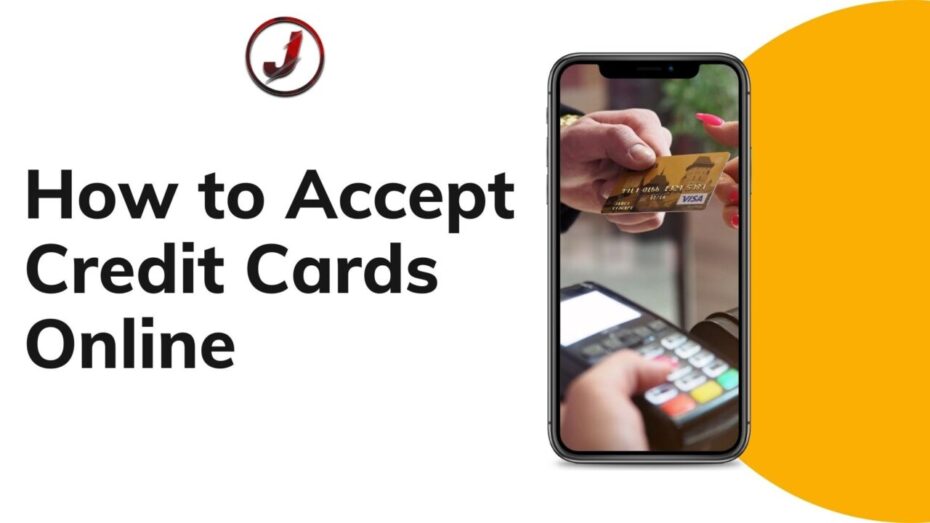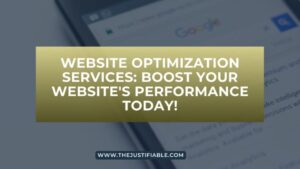Table of Contents
Accepting credit cards online is essential for businesses looking to expand their customer base and increase sales. By integrating a reliable payment gateway, companies can provide a seamless and secure transaction experience for their customers.
This article outlines the best practices and strategies to optimize online payment systems, ensuring your business can efficiently accept credit cards online.
Unveil the Best Payment Gateways to Accept Credit Cards Online
Choosing the right payment gateway to accept credit cards online is pivotal for your business’s operational efficiency and customer satisfaction. These gateways do more than facilitate transactions; they secure sensitive information and enhance the user experience.
In this section, we’ll explore what makes a payment gateway exceptional, which ones are leading the market, and how to evaluate their integration costs effectively.
What Makes a Payment Gateway Stand Out?
The best payment gateways distinguish themselves through superior security, user-friendly interfaces, and responsive customer support. These features not only protect your transactions but also build trust with your customers, encouraging repeat business.
- Security Protocols: I recommend you to prioritize gateways that adhere to the latest security standards, such as PCI DSS compliance and end-to-end encryption.
- Ease of Integration: I would say look for gateways that integrate seamlessly with your existing e-commerce platforms to avoid disruptions.
- Customer Support: I point out the importance of reliable customer support that can address issues swiftly and keep your operations smooth.
- Feature-Rich: My advice is to opt for gateways that offer additional features like fraud prevention tools and detailed analytics, which can provide insights into your transactions and help optimize your sales strategy.
Top Rated Payment Gateways for Seamless Transactions
Selecting a top-rated payment gateway ensures a smooth and efficient payment process, which can significantly enhance customer satisfaction and retention. Here, we’ll look at some of the most reliable and efficient gateways available today.
- Stripe: I believe Stripe’s powerful API and extensive customization options make it ideal for businesses that value flexibility.
- PayPal: I suggest PayPal for its widespread recognition and trust, which can help reduce buyer hesitation at checkout.
- Square: I advise you to consider Square if you are looking for an easy-to-use interface that integrates online and in-person sales effectively.
- Authorize.net: My recommendation is Authorize.net for its ability to handle a variety of payment methods, making it suitable for businesses with diverse payment needs.
Evaluating the Cost of Payment Gateway Integration
Balancing cost and quality is crucial when choosing a payment gateway. It’s important to understand all associated costs and weigh them against the benefits provided by the service.
- Fee Structure: I suggest examining the fee structure thoroughly to avoid any hidden costs that could affect your budget.
- Total Cost of Ownership: I advise you to calculate the total cost of ownership, which includes fees, maintenance, and any required upgrades, to ensure it aligns with your financial planning.
- Scalability: My point is that a gateway should scale with your business growth without becoming prohibitively expensive.
- Negotiation Possibilities: I think negotiating with providers for better rates as your volume increases can significantly lower costs in the long term.
By focusing on these aspects, you can choose a payment gateway that not only fits your budget but also supports your business’s long-term growth and customer service goals.
Essential Features Your Payment Gateway Must Have
To efficiently accept credit cards online, your payment gateway must be equipped with certain essential features that ensure not only seamless transactions but also enhance security and compatibility. A robust gateway will safeguard customer data and adapt to various business needs, proving indispensable for expanding your online presence.
Ensuring Robust Security Measures for Safe Transactions
Security is the cornerstone of any payment gateway. To protect both your business and your customers, a gateway must implement top-tier security measures.
- Encryption and Compliance: I recommend you to ensure that your gateway adheres to international security standards like PCI DSS. This protects sensitive data through encryption, safeguarding every transaction.
- Fraud Detection: I advise you to seek out gateways that include advanced fraud detection tools. These systems monitor transactions for suspicious activity, providing an additional layer of security.
- Tokenization: I suggest tokenization as a method to enhance security. By replacing sensitive data with unique identification symbols, it keeps customer information secure.
- Regular Updates: I think regular software updates are crucial. They address vulnerabilities and ensure your payment system remains impervious to new threats.
Integration Capabilities with Your Existing E-commerce Platform
A seamless integration into your current e-commerce setup is crucial for maintaining a smooth operational flow and providing a consistent user experience.
- API Accessibility: My recommendation is to choose a gateway that offers flexible and well-documented APIs. This makes integration easier and allows for more customized solutions.
- Compatibility: I point out the importance of ensuring that the gateway is compatible with your existing e-commerce platform to avoid any technical difficulties.
- Support for Mobile and Desktop Interfaces: I strongly believe in choosing a gateway that provides excellent support for both mobile and desktop users, as this maximizes customer reach.
- Customizability: I would say look for a payment gateway that allows customization to match your website’s look and feel, which can enhance brand consistency.
Support for Multiple Currencies and Payment Methods
To expand your market reach, your payment gateway should support a variety of payment methods and currencies, catering to both domestic and international customers.
- Multi-Currency Support: I advise you to ensure that your gateway can handle transactions in multiple currencies, which is essential for accepting payments globally.
- Diverse Payment Options: My advice is to offer a range of payment methods, including credit cards, e-wallets, and bank transfers, to accommodate all customer preferences.
- Real-Time Currency Conversion: I suggest providing real-time currency conversion to help customers understand exactly how much they will be charged in their local currency.
- Economic Feasibility: I recommend you to assess the economic impact of supporting multiple currencies, including any associated fees or exchange rate risks.
By focusing on these crucial features, you can ensure that your payment gateway not only meets current business needs but also scales effectively as your business grows and evolves.
Step-by-Step Guide to Setting Up Your Payment System
Implementing a reliable payment system to accept credit cards online is vital for your business’s growth. This guide offers a structured approach to ensuring that your payment system is both effective and secure. By meticulously selecting the right payment gateway, integrating it with your existing systems, and rigorously testing the setup, you’ll provide a seamless and secure transaction experience for your customers.
The process begins with choosing a payment gateway that aligns with your business needs, followed by careful integration and extensive testing to ensure functionality and security. These steps are essential in building a payment system that not only meets current demands but is also scalable for future growth.
Choosing the Right Payment Gateway for Your Business
Choosing the appropriate payment gateway is foundational in building a successful online transaction system. This gateway will handle all your transactions, so it must be robust, secure, and easy to use. I recommend considering the gateway’s security features, transaction speeds, and ease of integration.
It’s important to select a gateway that offers excellent support and service reliability. This ensures that any issues can be promptly addressed without affecting your business operations. Furthermore, consider the fees associated with the gateway, as minimizing costs is crucial for maintaining profitability.
Your choice should also reflect the geographical scope of your business. If you serve international customers, the gateway must support multiple currencies and payment methods. This flexibility can significantly enhance customer satisfaction and expand your market reach.
Lastly, I advise you to review user feedback and expert reviews for potential gateways. This information can provide insights into the reliability and efficiency of the service, helping you make a more informed decision.
Technical Steps for Integration
Integrating the payment gateway into your business infrastructure is a critical step that requires careful planning and execution. Start by mapping out the integration points between your website and the payment gateway. This will help you identify potential challenges in the integration process.
Ensure that your technical team is involved from the beginning. Their expertise will be crucial in implementing the integration smoothly. They can also assist in setting up secure connections to protect data integrity and privacy.
I suggest conducting a pilot integration on a small scale before fully deploying the system. This can help detect any unforeseen issues that might not be apparent in a test environment. It also allows your team to understand the practical challenges of integration.
Regular updates and maintenance post-integration are necessary to ensure the payment gateway continues to function efficiently. These updates can also include new features and security enhancements that benefit your business.
Testing Your Payment System Before Going Live
Before launching your payment system, comprehensive testing is crucial to ensure that it functions as intended. Start with basic functionality tests to ensure that the system can handle transactions correctly. This includes verifying that payments are processed and recorded accurately.
Security testing is also crucial. This involves checking the system’s ability to protect against potential security threats, such as data breaches and fraud. I believe rigorous security testing will help maintain your customers’ trust and protect your business reputation.
Load testing should be performed to ensure the system can handle high volumes of transactions without faltering. This is particularly important during peak business periods when transaction volumes can significantly increase.
Finally, user acceptance testing involves real users testing the system to provide feedback on its usability and functionality. I recommend gathering feedback from this testing phase to make any necessary adjustments that could improve the user experience.
By following these detailed steps, your business can establish a reliable and secure system to accept credit cards online, enhancing your operational capabilities and providing your customers with a seamless payment experience.
Optimizing the Checkout Experience to Increase Conversions
Enhancing the checkout experience is crucial for any business looking to accept credit cards online effectively. A smooth, fast, and user-friendly checkout process can significantly increase conversion rates by reducing cart abandonment.
This section will guide you through optimizing your checkout pages to ensure they are as efficient as possible, offer design tips to improve user interaction, and explain how to troubleshoot common payment issues.
Creating a checkout process that customers find easy and reassuring can directly impact your sales positively. The goal is to make the payment process as simple as possible while ensuring security and building trust. By focusing on these aspects, you can improve the overall customer experience and encourage repeat business.
Minimizing Page Load Times for Checkout Pages
A fast-loading checkout page is essential for keeping your customers engaged. I point out that minimizing page load times can be a significant factor in preventing cart abandonment. To achieve this, optimize your images, streamline your code, and reduce redirects.
I suggest using lightweight graphics and compressing images to speed up page loads. Additionally, consolidating your tracking scripts and using a content delivery network (CDN) can also improve load times. Ensuring your hosting solution is adequate for your traffic levels plays a critical role in load performance.
Efficient use of caching can make a big difference in how quickly your checkout pages load, especially during high-traffic periods. I would say it’s wise to regularly review your caching strategies to ensure they are optimized for the best performance.
Testing your checkout process across different devices and connections is crucial. I advise you to conduct these tests regularly to ensure that your checkout experience remains fast and reliable no matter how or where your customers access it.
Design Tips for a User-Friendly Payment Process
Designing a user-friendly checkout process is key to converting visitors into paying customers. I recommend simplifying the navigation and keeping the number of steps to a minimum to enhance the user experience.
A clean design with a clear call to action can significantly reduce confusion and help guide users through the payment process. I think it’s important to use familiar elements, like recognizable buttons and intuitive form fields, which can help decrease checkout time and reduce friction.
Providing visual confirmations for each completed step can reassure customers and reduce errors. I believe this helps build trust and confidence in your payment process. Also, making sure that your forms are mobile-friendly is crucial as more users are now shopping via mobile devices.
Error handling should be transparent and helpful. I strongly believe in providing clear error messages that can help users correct mistakes without frustration. This approach ensures that users feel supported throughout their buying journey.
Troubleshooting Common Payment Issues
When customers encounter payment issues, it can quickly lead to frustration and lost sales. I advise you to establish a clear protocol for addressing these issues promptly to maintain trust and customer satisfaction.
Regularly updating and testing your payment gateway integration can prevent many common issues. I recommend keeping your system up-to-date to avoid compatibility problems that can arise from outdated software.
Having a dedicated support team ready to assist with payment issues is invaluable. I suggest setting up an easy-to-use support system that can guide customers through common problems efficiently. This includes having FAQ sections, live chat support, and clear contact information for direct assistance.
Monitoring transactions for patterns that could indicate problems, such as frequent declines or timeouts, is critical. I point out that addressing these patterns proactively can help mitigate issues before they affect a larger segment of your customers.
By implementing these strategies, you can create a checkout experience that not only delights your customers but also drives increased conversions, helping your business grow and succeed in the competitive online marketplace.






